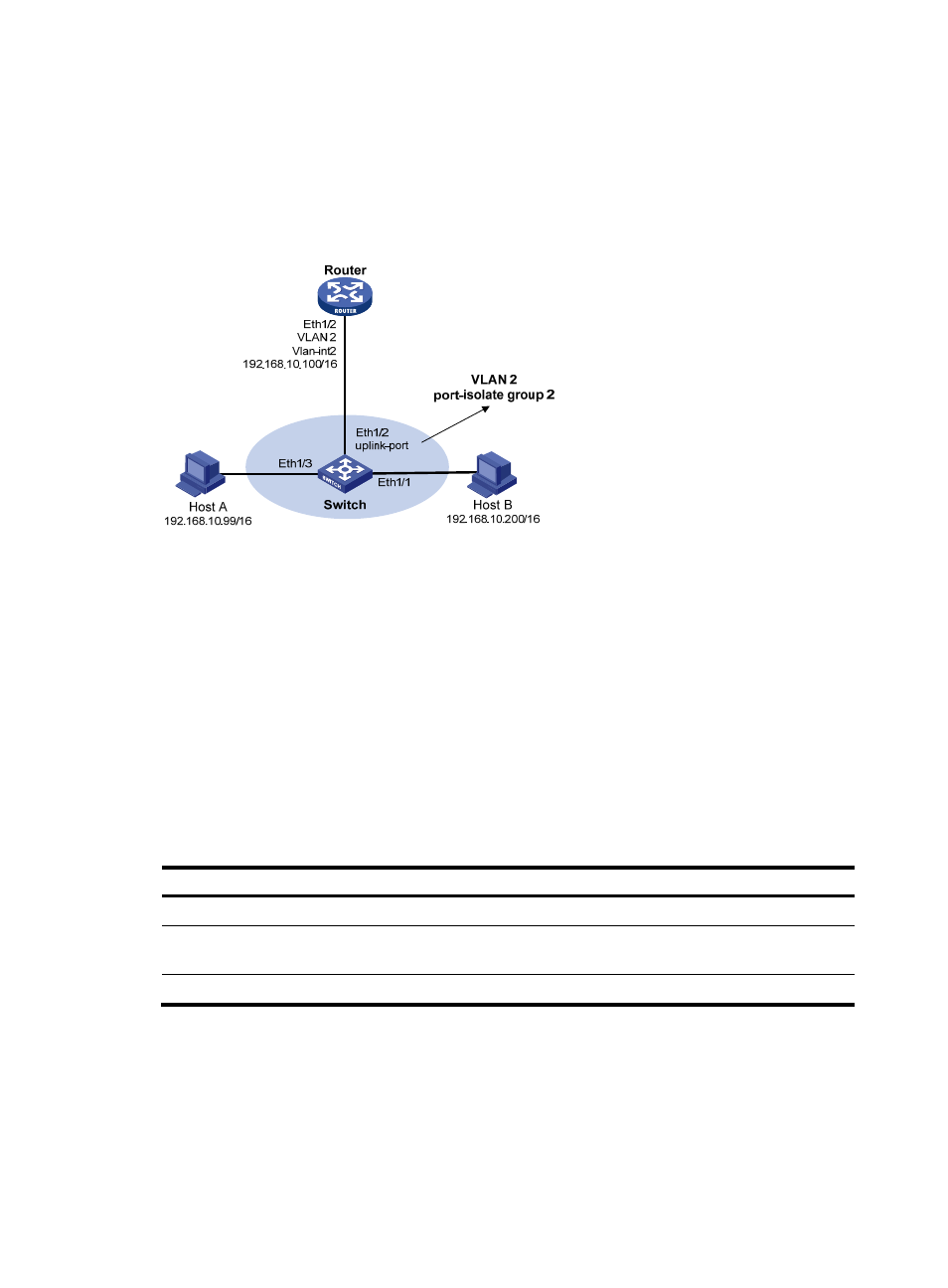Local proxy arp, Enabling common proxy arp, Enabling local proxy arp – H3C Technologies H3C SecPath F1000-E User Manual
Page 282

257
Local proxy ARP
As shown in
, Host A and Host B belong to VLAN 2, but are isolated at Layer 2. Host A
connects to Ethernet 1/3 while Host B connects to Ethernet 1/1. Enable local proxy ARP on Router to
allow Layer 3 communication between the two hosts.
Figure 164 Application environment of local proxy ARP
Enable local proxy ARP in one of the following cases:
•
Hosts connecting to different isolated Layer 2 ports in the same VLAN need to communicate at Layer
3.
•
If a super VLAN is configured, hosts in different sub VLANs of the super VLAN need to communicate
at Layer 3.
•
If an isolate-user-VLAN is configured, hosts in different secondary VLANs of the isolate-user-VLAN
need to communicate at Layer 3.
Enabling common proxy ARP
To enable common proxy ARP in VLAN interface view/Layer 3 Ethernet interface view/Layer 3
aggregate interface view:
Step Command
Remarks
1.
Enter system view.
system-view
N/A
2.
Enter interface view.
interface interface-type
interface-number
N/A
3.
Enable proxy ARP.
proxy-arp enable
Disabled by default
Enabling local proxy ARP
To enable local proxy ARP in VLAN interface view/Layer 3 Ethernet interface view/Layer 3 aggregate
interface view:
- H3C SecPath F5000-A5 Firewall H3C SecPath F1000-A-EI H3C SecPath F1000-E-SI H3C SecPath F1000-S-AI H3C SecPath F5000-S Firewall H3C SecPath F5000-C Firewall H3C SecPath F100-C-SI H3C SecPath F1000-C-SI H3C SecPath F100-A-SI H3C SecBlade FW Cards H3C SecBlade FW Enhanced Cards H3C SecPath U200-A U200-M U200-S H3C SecPath U200-CA U200-CM U200-CS H3C SecBlade LB Cards H3C SecPath L1000-A Load Balancer
